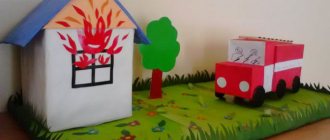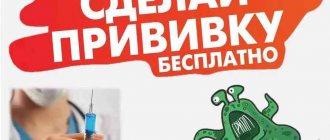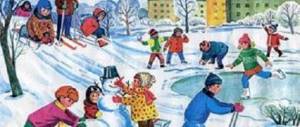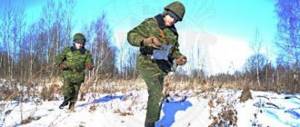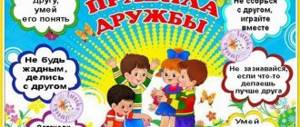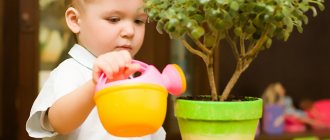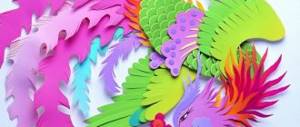On the topic: methodological developments, presentations and notes
Summary of a lesson in mathematics with children of the preparatory school group “Journey into the past of hours”
Abstract of the GCD for designing with children of the preparatory school group "Snowflake"
Program content: - Clarify and expand ideas about a snowflake. - Develop observation skills, interest in studying…
From a very early age, every person must be instilled with love and respect for sports, because it not only helps us maintain a healthy and fit body, but also develops in a person such character qualities that help him overcome many difficulties in life and become better. One way to enable a child to understand what sports is is through drawing. In preschool and school institutions, you can organize competitions of thematic sports paintings. Children will not only be curious, but also exciting, because they will be able to compete with each other. We have made a selection of sports-themed drawings for our readers. You can show these drawings to children before the competition as an example.
Lesson Objectives
When working with children, it is important to complete the tasks below. They can be divided into several groups.
Developmental and educational
The following software tasks must be completed:
- Children are taught to draw human figures, paying attention to the proportionality of various parts of the human body.
- Before drawing, they are taught to create a model of body position using stick figures. They tell you how to use it.
- Children are taught fine arts, the ability to express themselves in a drawing.
- They try to get kids interested in sports and show that it is useful and interesting.
How and when to instill a love of reading in children, ways to interest them
They also face the following speech correction tasks:
- Using the example of physical exercises and the names of various parts of the body, children's vocabulary is developed.
- They teach kids the correct use of suffixes for diminutive names.
- The teacher, controlling sound pronunciation, teaches how to pronounce words correctly.
Note! Additionally, the problem of developing children’s fine motor skills is solved.
Drawings about sports, step by step
Option #1: Gymnast
- We draw several approximately identical circles on the sheet. They should be located in one line at a slight angle.
- We depict the contours of the gymnast’s body and the hands with which she holds the ball. Everything should look schematic at this stage:
- Now the contours need to be shaped:
- When all parts of the body are clearly marked, draw a bold pencil on the face, arms, legs and torso. We also draw the gymnast’s hair:
- Add shadows to the drawing and remove all unnecessary lines:
Option #2: Skier
- We make sketches of the geometric shapes of a person who is standing on skis in a “half-sitting” position:
- Next you need to draw the skier’s suit, his helmet with boots and, of course, his skis:
- Now on the costume you need to draw shading and other elements that you consider necessary:
- All that remains is to shade in the right places and the skier is ready:
Drawing a sport, step by step
Option #1: Snowboarding
- First we draw the snow itself. This is a regular board rounded at both edges. It should be slightly tilted to give the impression that the athlete is performing some kind of maneuver in the drawing. You need to immediately draw the head; it is located at the same level as the upper edge of the snowboard. Please note that the athlete’s legs should also be slightly visible.
- Draw the shins. The athlete’s legs will not be completely visible, since in the picture he is depicted in a “half-sitting” position.
- We round the knees and draw a helmet with a mask on the head.
- We sketch out the markings of how the shoulders and arms should be positioned. Note that one hand is free, which will reflect how the athlete maintains balance, and with the other he holds on to the snowboard.
- We detail the drawing - add facial features and clothing elements.
Option #2: Speed skating
- First, we draw the skater’s body using ordinary lines and simple geometric shapes.
- We add additional lines to the lines indicating the athlete’s body so that the arms and legs are clearly distinguished. At the same stage we draw the hat, nose and mouth.
- We add eyes on the face, draw ears, as well as lines on the tracksuit of the hero we are portraying. We also draw the skates with simple lines so that their frame is clearly visible.
- We detail the drawing with different elements, and then color it at our discretion.
Practical part of the lesson, drawing “Children doing exercises”
Now a step-by-step description of the main part of the drawing lesson is given.
The course of the GCD, what techniques can be used during the lesson
The kids are divided into two groups. One of them is tasked with enlarging objects, the other with decreasing them. To do this, they are called using a suitable suffix: “shoulders - hangers - shoulders, arms - handles - hands”.
They are allowed to speak. Then the teacher asks which people have arms and shoulders. After discussion, they come to the conclusion that athletes. They are then asked what they do to become strong, whether they exercise. Against the background of the discussion, the teacher suggests remembering exactly what exercises are done during exercise.
GCD lesson on speech development in the middle group
He shows the already laid out figurine to the children and asks which parts of the body are depicted using counting sticks. Children call: torso, legs, hips.
The teacher specifies how many sticks are needed to depict a particular part of the body. The kids answer.
Then a poem is recited, with the help of which children's physical education was performed, but this time all actions are shown with the help of sticks.
Important! The teacher tells the children that the little men showed them the basic movements, and now he wants to find out what each child’s favorite exercises are. The children tell stories and all together try to portray them using sticks.
At this stage, drawing techniques are explained. As an example, a figurine is taken, and the kids are explained its structure and told how to use it to draw an image of a person.
The explanation goes something like this:
- First you need to draw the head, then the shoulders, torso and hips. Then you need to draw the arms and legs. After this, the hips and shoulders are connected, outlining the torso. Then the details are added to the figure.
- The drawing can be done on transparent paper to make the drawing process easier.
- After the drawing is completed, the children describe the exercises in poetry and do them.
- After the end of physical education, children are asked to remember their favorite exercise and draw a picture of it. The kids draw, and the teacher helps them.
- Next, exercises are performed to develop fine motor skills. To do this, they pronounce the names of body parts, and the children point to them.
This is where the main part ends.
Children doing exercises
Musical accompaniment in senior groups
During the exercises, music plays to set the rhythm of the movements.
Step by step drawing process
Drawing in the senior group “Children doing exercises” is performed in stages.
Important! During the lessons, children are taught to add up images of moving people using counting sticks. Then they explain step by step how to correctly draw a person based on the figure.
First, everyone depicts the proposed models. Then the children are asked to draw each their favorite exercise.
Note! To consolidate the material, it is possible not only to draw independently, but also to work with coloring books.
Drawing about sports in pencil, step by step
Drawings about sports are not only images of sports attributes, they are also people who have achieved great success in sports. We invite you to draw a champion boxer:
- We sketch out the main elements in the figure - these are parts of the body:
- Draw the athlete's face. Here you need to remember the main rule - the person’s nose is drawn clearly in the center in relation to the eyebrow line and chin. In other words, the nose is the point of intersection of lines, the extreme points of which are the eyebrows and chin:
- After this, we begin drawing the lines of the body. Since this is an athlete, you need to draw every muscle and line in detail:
- Only shadows remain on the body. They are necessary so that, looking at the drawing, emotions are evoked:
Sports drawing competition
Every preschool institution can hold the following sports-themed drawing competition:
- Children can draw on any material, whatever they like best on the topic of sports. There is no need to limit children in anything so as not to lose their interest.
- The work may also contain some elements of arts and crafts.
- From each child you can only accept one of the best, in his opinion, work.
When the drawings are ready, they need to be hung in the most visible place, but at the same time difficult for children to reach. Place the ballot box next to the drawings. Let everyone who comes to kindergarten vote. To keep everything fair, do not sign the work on the front side.
Be sure to hold similar competitions in educational institutions in order to promote a healthy lifestyle, develop the creative abilities of children and form the correct model of behavior for each child. Don’t forget to lead by example so that results can be achieved quickly and efficiently!
Summary of GCD for non-traditional drawing in the senior group “Winter Sports”
GCD scenario for non-traditional drawing with “puffy paints” in the senior group “Winter Sports”
Program content: Learn to draw the figure of a person (child) in winter clothes (overalls, conveying the shape of body parts, their location, proportion, learn to convey simple movements of the arms and legs , lead children to convey an image in an unconventional way (using the hand). Continue to teach how to use different materials in drawing: marker, shaving foam, consolidate technical skills in drawing with materials. Develop the ability to convey in drawing your attitude to winter games; instill a love for a healthy image life and sports. Material: reproduction of the painting by V. Surikov “The Capture of the Snow Town”, illustrations depicting winter sports; plastic tray; “puffy” paints. Preliminary work: • examination of the reproductions of V. Surikov “The Capture of the Snow Town”, illustrations of winter landscapes; • didactic lotto game “Clothes in any weather”; • observations of children’s games on the site;
• drawing with various art materials. Progress of the lesson
Children stand in a circle, perform movements according to the text:
Educator: Hello, right hand, Hello, left hand, Hello, friend, Hello, friend, Hello, our cheerful circle! What's your mood now? Children: Good.
Educator: And I’m in a good mood too.
Look, I have a ball in my hand, but not an ordinary one, but a magical one. We will pass it on to each other and put one winter word and a good mood into it (children pass the ball from hand to hand).
Educator: Let's pass it on to our guests, let them also put in one winter word.
Now hold your hands and close your eyes. Look what happened to our little ball? We filled it with winter words and conveyed our good mood to it, and it grew big. But it reminds me of something, what about you? (we make snowmen)
. Do you like winter? For what? What games can you play in the fresh frosty air in winter? Do you like to go hiking in winter? What is the best way to dress outside in winter so as not to freeze? Do you want to listen to a story about two palms that help children draw? Please go to the tables. 1.Place your left palm in the center of the tray. Move your thumb to the side. Press your ring and little fingers together, close your index and middle fingers tightly and move them slightly to the side.
Educator: A tick should form between the ring and middle fingers. Press your palm firmly against the tray to prevent it from moving. With your right hand, circle your palm with a marker, but do not press the marker too hard onto your fingers. Remove your left palm from the tray and close two lines.
Educator: Turn the tray over. Say, children, “What does this look like?”
Educator: Draw two arcs on top (hood).
And on the right side we will draw a second hand. You decide where it will be directed: up, down, to the side or to the left on the athlete’s winter overalls. Physical education lesson: “Snowdrift, slide, skating rink.” Music. Children, do you love Winter? What about games in winter? At my signal, Snowdrift, the children perform a crouching movement. Slide - in pairs, hands up. Skating rink in small circles – round dance. Snowballs are made and thrown. Skiing - Going skiing.
Educator: In any fairy tale there is a miracle and transformation, so today I will introduce you to the fascinating process of turning ordinary shaving foam into bright, funny puffy colors. And this is where fabulous miracles begin: Choose a bag of a certain color of puffy paint and start painting the jumpsuit and hood. (they can be anything - slide).
While drawing
Educator: I’ll tell you the process of making “puffy paints.” I added food coloring to a glass of PVA glue. Then I filled this glass with shaving foam. And she mixed everything until a uniform color was formed. Our “puffy” paints are ready! Children, let's talk about sports and sports today. What is sport? (children's answers) Sport is physical exercise, regular training, and sports competitions. What are people who play sports called? (athletes). What do you need to do to become an athlete? (you need to do exercises every morning, do physical exercise, and toughen up). Why do you think people play sports? What do you think sport gives a person? (children's answers). What you said is true. Sport makes a person strong, resilient, and improves health. If you regularly engage in sports and exercise, you will get sick less.
Educator: Soon, guys, in our country, in Ufa, the second Russian-Chinese Winter Games 2020 will take place on December 14.
What winter sports do you know? (children's answers) Well done, you know a lot of sports. All winter sports can be divided into two groups: sports played on snow and sports played on ice. You can also divide them into three groups. And which ones we will now find out. Guess the riddles: 1. I ride on it until evening, But my lazy horse only carries me from the mountain. I myself go up the hill on foot, and I lead my horse by a rope. (sleigh)
2. Two wooden horses carry me down the mountain.
I hold two sticks in my hands, but I don’t hit the horses, I feel sorry for them. And to speed up the run I touch the snow with sticks. (skis)
3. I have two silver horses, They carry me across the water, And the water is hard, Like stone.
(skates) The final part of the work: The teacher suggests to the children - The drawing should convey the mood.
Reflection: “Champion.” Image of the pedestal 1st, 2nd, 3rd places, paper emoticons (smiling and sad) according to the number of children.
If you were interested today and you managed everything, then you can put your little man in first place, he did well and won.
If you were interested, but not everything was easy, then stick your little man on the second step, he will still be learning. And if you weren’t very interested today, you had difficulty completing tasks, then stick your little man in third place, don’t be upset, because you’ll definitely succeed next time! On the screen is a Snowman made with “puffy” paints. Perspective: Educator: Would you like to also work in the technique of “puffy” paints?
In the next lesson we will continue our unconventional creativity and “revive” the Snowman!
We recommend watching:
Summary of a lesson in mathematics in the senior group on the topic: Winter Summary of GCD in the senior group on the topic: Snowflakes Summary of a lesson on speech development and literacy in the senior group on the topic: Wintering birds Summary of a drawing lesson on the topic: Winter for the senior group of preschool educational institutions
Similar articles:
Walk “Wind Watching” in the senior group
Observation in the senior group of kindergarten. It's frosty outside
